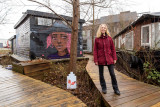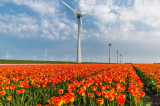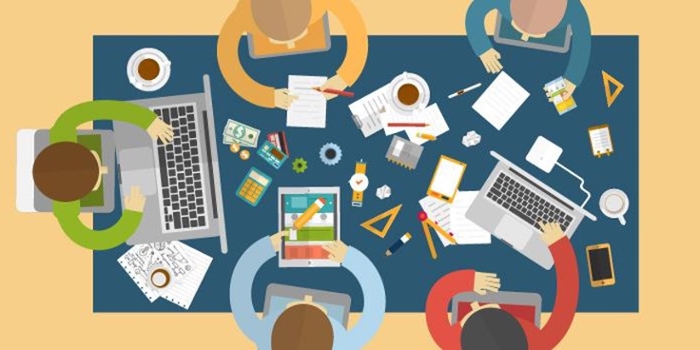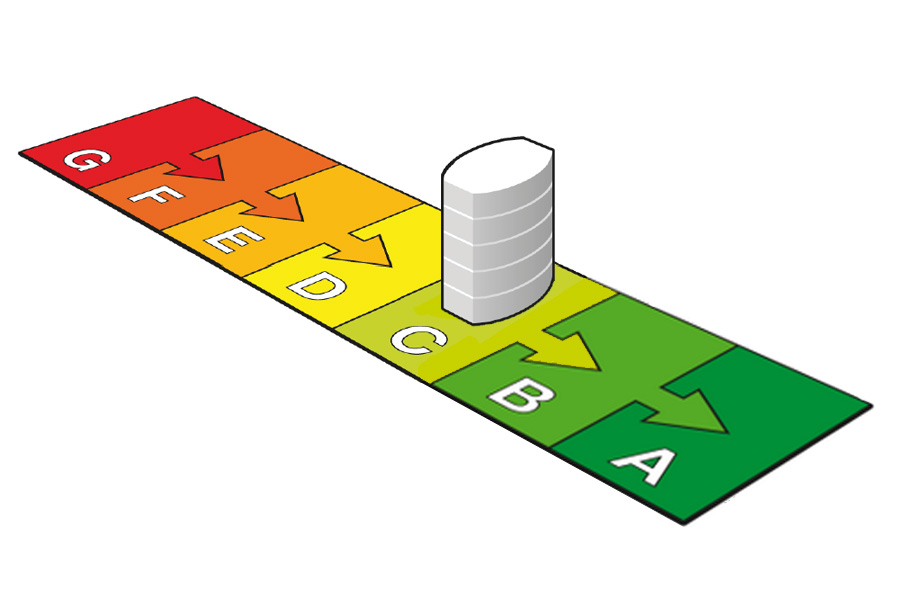Stay in the know on all smart updates of your favorite topics.
New e-book: Kennisdossier Zonne-energie

I updated and put together 75 posts and articles about the energy transition in a new e-book (in Dutch) 'Kennisdossier Zonne-energie' (120 pages). If you interested, download it for free with the link below.
De duurzame toekomst van Amsterdams afvalwater

Als je de wc doortrekt, denk je waarschijnlijk niet na over wat er met het water gebeurt. Maar hier gaat een hele wereld achter schuil! En er wordt hard aan gewerkt, om die verborgen waterwereld duurzamer te maken. Als innovatietechnoloog bij Waternet houdt Enna zich bezig met het ontwikkelen van slimme afvalwatersystemen, en wij van De Gezonde Stad interviewden haar.
Wat is jouw droom voor Amsterdam?
“Dat water voor Amsterdammers meer waarde heeft. Dat we het meer respecteren. Nu is het zo vanzelfsprekend dat er water uit de kraan komt, zoveel en wanneer we maar willen. En we gaan naar het toilet, of onder de douche, of zetten de afwasmachine aan, en voor de bewoners is het water weg. Het zou fijn zijn als de hele cyclus meer circulair is. Dat afvalwater niet langer iets is wat vies is, maar dat we het gaan zien als een grondstof die we graag willen hergebruiken. Wat nou als je bij de bouwmarkt een toilet kan kopen die jouw urine apart houdt en daar meststof uithaalt die je zelf in je tuin kan gebruiken of af kan geven alsof het een statiegeldsysteem is. Dan krijgt het zoveel meer waarde.”
Lees op onze website het hele interview en leer de verborgen waterwereld kennen!
RESILIO - Hydrological solutions & climate adaptation (part 4)
What will happen if we scale up our hydrological capacity to a stunning level of 13% Amsterdam wide? Researcher Tim Busker explains this in our new video
The smart technique between blue-green roofs.

Today we will launch our brand new five-part movie series of RESILIO!
This serie will dive into the different approaches & researches within the project and the partners with their specific expertises. In the first one Kasper Spaan from water company Waternet and Friso Klapwijk MetroPolder Company explain you how smart micro watermanagement can be of paramount importance to a complete city. It’s not just a drop in the ocean... check it out here:
The application deadline is almost here! Join Startup in Residence Amsterdam now

On 4 October 2021, Startup in Residence published 12 new challenges on the themes of sustainability & circularity. The City of Amsterdam is looking for the best entrepreneurs (start-ups, scale-ups, innovative SMEs, and social entrepreneurs) with creative and innovative solutions for the city’s issues. The application deadline is almost here! Finish your application before 24 November 23:59 (CET).
The challenges
Solutions are sought for the following challenges
1. Preventing the build-up of waste around Amsterdam’s temporary canal wall supports
2. Circular joint filling material
3. Smart sustainability monitor in the contract phase of procurement
4. On demand and flexible collection of waste and materials in the centre of Amsterdam
5. Industrial Energy Transition with Hydrogen & CO2
6. Smart options for using dredged sediments from Amsterdam
7. A virtual public transport experience
8. Circular material trade in the Port of Amsterdam
9. On-demand power deployment solutions in the Port of Amsterdam
10. Sustainable use of exhibition design elements
11. Transport of artworks on loan
What's in it for me?
Join the 7th edition of Startup in Residence Sustainability & Circularity and get:
- an intensive six-month training programme;
- support from an experienced mentor;
- access to the entire network of the City of Amsterdam;
- opportunity to test and validate your product or service with and within the City of Amsterdam;
- the City of Amsterdam as your potential launching customer.
Don’t wait, apply now! www.startupinresidence.amsterdam
11 building blocks for the transition to sustainable energy

In five consecutive blog posts, I have explored the opportunities and risks in the energy transition of carbon capturing and storage (CCS), biomass, geothermal energy, hydrogen, and nuclear energy, in addition to solar and wind. Find my conclusions below:
1. Sun and wind energy
I will feel most comfortable in a world deploying energy provided by sun and wind to reduce greenhouse gas emissions. This implies a huge transition, which, also brings significant benefits for an emerging sustainable economy.
2. Nuclear energy plants
Instead of opting for an expensive third-generation nuclear power plants, we better invest in the development of fourth generation nuclear energy plants, such as Thorium, or molten salt reactors. Their waste is limited, and they are inherently safe. These reactors could potentially replace outdated wind turbines and solar panels from 2040.
3. Using less
We must also continue using less energy, without undue expectations. After all, clean energy can potentially be abundantly available in the long term, although this is particularly relevant for developing countries.
4. Hydrogen energy
In addition to the use of solar and wind energy, I am opting for hydrogen. It will be used for heavy industry, to level discrepancies in the supply and demand of energy and as an additional provision for heating buildings and houses. The presence of a high-quality gas network is easing this choice. In addition, we use residual heat, biomass of reliable origin and we exploit geothermal energy where its long-term availability is assured.
5. Energy from the desert
By no means we are producing all necessary hydrogen gas ourselves. The expectation is realistic that after 2030 it will be produced in deserts and transported from there at a competitive price.
6. Wind turbines and solar panels
The North Sea and the IJsselmeer will become the most important places for the extraction of wind energy. Besides, solar panels are installed on roofs wherever possible. We care for our landscape and therefore critically consider places where ground-based solar panels can be installed and where wind turbines are not disturbing. Part of the wind energy is converted into hydrogen on site.
7. Capture and store CO2
It could easily last until 2040 before the import and production of hydrogen meets our needs. Therefore, we must continue to use (imported) gas for quite some time. To prevent greenhouse gas emission, significant capacity to capture and store CO2 must be in place.
8. Gas and coal
Given the availability of temporary underground storage of CO2, premature shutting down our super-efficient gas and coal-fired power stations it is unnecessary capital destruction. They can remain in operation until the facilities for solar and wind energy generation are at the desired level and sufficient hydrogen gas is available.
9. Local energy
Energy co-operations facilitate the local use of locally produced energy, thus enabling lower prices, and limiting the expansion of the electricity grid. To this end, private and neighborhood storage of electricity is provided.
10. Biomass
Reliably collected biomass is deployed as raw material for the biochemical industry in the first place and can further be used for additional fueling of coal and gas-powered stations (with CO2 capture) and as local energy source for medium temperature district heating networks.
11. Take some time
Finally, we must take enough time to choose the best way to heat buildings and houses at neighborhood level. Getting off gas prematurely can induce wrong choices in the longer term. A gradual phasing out of gas heating will enable us to wait longer for the moment when hydrogen (gas) is available to replace the natural gas in neighborhoods where it is the best solution.
Meet the five stepdaughters of the energy transition

Last months, I wrote short essays about controversial aspects of the energy transition: geo-engineering (CCS included), biomass, geothermal energy, hydrogen and nuclear power (in Dutch). With these articles I tried to clarify my thoughts and to share my conclusions with others. At the end of the fifth article, I arrived at a - provisional - conclusion in 11 short phrases. I wonder whether you agree....
Wat is jouw energielabel?
HvA-studenten Data Science voorspellen voor Vattenfall het energielabel voor gebouwen die dat nog niet hebben, om de energietransitie te versnellen.
Heeft jouw kantoorgebouw energielabel D? Dan is er werk aan de winkel. Om de klimaatdoelen uit het Parijsakkoord te halen en de opwarming van de aarde te beteugelen, moet de gebouwde omgeving versneld verduurzamen en vanaf 2023 minimaal energielabel C scoren. Een vernieuwd energielabel moet daarbij helpen. Maar wat als je dat nog niet hebt? HvA-studenten buigen zich voor partner Vattenfall tijdens een hackathon over de vraag: Kan voor gebouwen zonder energielabel een schatting voor een energielabel worden bepaald aan de hand van beschikbare data?

Na twee uur begaf de dataserver het al. Niet zo gek, er was haast en drukte: binnen een hackathon van een kleine week moesten de studenten van minor Data Science allemaal tegelijk de beschikbaar gestelde data over energieverbruik van Vattenfalls klanten analyseren. Met als doel: een zo accuraat mogelijk voorspelmodel voor de energielabels van gebouwen. Normaal ben je al weken lang bezig met datasets verkennen voordat je over kan gaan op opschonen, categoriseren, analyseren en voorspellen middels machine learning, stelt Rick Wolbertus, docent-onderzoeker Data Science van lectoraat Energie en innovatie. ‘Nu moesten ze dat in enkele dagen doen. Daarin zie je de kracht van een hackathon: binnen een bizar korte tijd krijg je verrassende uitkomsten; een groepje had een 84% accuraatscore in hun voorspelling voor energielabels, dat is echt knap.’
Energielabel bepalen
Van woningen tot fabriekshallen, het energielabel is een middel om de energie-efficiëntie van gebouwen te kwalificeren. Sinds begin dit jaar heeft het energielabel een metamorfose ondergaan, kent het andere kwalificeringseisen en is het bovendien verplicht geworden voor alle gebouwen. Met de nieuwe en vereenvoudigde bepalingsmethode (NTA 8800) wordt de energie-efficiëntie nu uitgedrukt in het energieverbruik per vierkante meter gebouwoppervlakte. Deze indicator is goed te vergelijken met werkelijk energieverbruik en moet beter inzicht geven in de energiezuinigheid van het gebouw. Daar kunnen maatregelen aan gekoppeld worden voor verduurzaming.
De hackathon voor energielabels is het eerste vraagstuk uit de praktijk voor studenten die voortkomt uit de tienjarige samenwerking tussen HvA Centre of Expertise Urban Technology en energieleverancier Vattenfall. De hackathon levert snel een frisse blik op, vertelt Tim Pellenkoft, data scientist bij Vattenfall. ‘De studenten, met verschillende achtergronden in onder andere journalistiek, technische bedrijfskunde en aviation, hebben andere denkbeelden die tot nieuwe inzichten leiden. Zo zagen zij patronen in bouwjaar, waar ik zelf nog niet op was gekomen. Oud bouwjaar? Vrijwel altijd een laag energielabel. Daar tegenover staan nieuwere gebouwen, die met een hoger label vaak beter zijn geïsoleerd.’
Het is aan de studenten om zulke variabelen, die invloed hebben op het energielabel, uit de data te halen. Daarin werden verrassende keuzes gemaakt, zag ook Wolbertus. ‘De data toonden enorme verschillen in verbruik tussen gebouwen van diverse industrieën. Industrieën die gigantische machines in hun gebouw gebruiken, die wil je scheiden van andere type bedrijven. Dus moet je categorieën maken en die in de voorspelling (middels machine learning-modellen) van elkaar scheiden. Zo voorkom je scheve analyses en kun je accurate verbanden leggen. Daar kwamen studenten zelf mee!’

Inzicht in verbeterpotentieel voor gebouwen
De uitkomsten uit de analyses en voorspellingen van de studenten kunnen bijdragen aan een model dat energieleveranciers, gebouwbeheerders, bouw- en installatiebedrijven inzicht geeft in het verbeterpotentieel van het energieverbruik van gebouwen. Want om de klimaatdoelen van het Parijsakkoord te halen, staat de (bestaande) gebouwde omgeving nog voor een aantal uitdagingen: significante energiebesparing, zelf zoveel mogelijk energie opwekken, energie verbruiken op de momenten dat het duurzaam wordt opgewekt en het realiseren van alternatieven voor aardgas als bron van verwarming. Heb je dat op orde? Dan mag je rekenen op een ‘perfecte’ energielabel-score A+++.
Voor veel gebouwen is het nog niet zo ver. Daarom zijn data en voorspelmodellen nuttig, aldus Pellenkoft. ‘Die bieden periodiek inzicht voor onze klanten, zodat zij kunnen sturen om vanaf 2023 het verplichte energielabel C voor kantoorgebouwen te realiseren.’ En de studenten? Vattenfall gaat met vier studenten tien weken lang voortbouwen op de inzichten uit de hackathon, om tot een eindproduct te komen zoals een verbeterd voorspelmodel. Pellenkoft: ‘Zo kunnen zij meer leren over data science-projecten in de praktijk, en stomen we studenten heel gericht klaar voor werk na de studie.’
Meer informatie?
- Centre of Expertise Urban Technology
- Transitiethema Energy Transition
- Lectoraat Energie en innovatie
- Faculteit Techniek
- Energieleverancier Vattenfall
Green IT Amsterdam and SDIA join forces to make digital infrastructure even more sustainable

AMSTERDAM, 21 JANUARY 2021 - Green IT Amsterdam and Sustainable Digital Infrastructure Alliance are joining forces.
Both organisations have a strong focus on making the digital infrastructure more sustainable. Together they want to initiate or join innovation projects focused on sustainability. Additionally both organisations will work together to make the knowledge and technology they develop commercially available to the market as quickly as possible. For example by creating startups that develop and sell software, cloud services and other tools that can be used by data centres and others to green their digital infrastructure.
Applications open! Rockstart Energy Program 2020 is starting again
We are looking for startups 🚀
The Energy Program of Rockstart is a domain-focused accelerator-VC with follow-on growth funding. We are looking for startups at the intersection of IT & Energy that contribute to the current energy transition.
Through our Energy Program, Rockstart gives startups access to capital, market, community, and expertise by connecting them to and further working with strategic partners, investors, mentors and our extended network. The top-down, centralized, fossil fuel system is being disrupted by smart, decarbonized, digitalized and decentralized models, offering abundant, clean, renewable, and local energy. We are searching for startups with these energy goals in mind.
Does your startup fit the description? Find out more information on Rockstart’s program and how to apply on our Energy Program website: https://www.rockstart.com/energy/energy-program/
RVO announces European Green Deal call for SMEs
The European Green Deal is the European Commission's strategy for a more sustainable, cleaner and healthier European economy. Research and innovation are of course key to make this happen. RVO (the Dutch agency for subsidies) announces several calls in the coming months of 2020 with a total budget of € 1 billion.
First one on the planning is a special EIC accelerator call for SMEs that need some help to develop a green idea and scale it up internationally. Support will be a subsidy up to € 2,5 million and there is an option for receiving equity up to € 15 million. Projects need to contribute substantially to the European goals for fighting climate change.
Please note that this information is preliminary, more info in Dutch on the website of RVO and we expect that the EU will publish this call in the coming weeks. The RVO-site will update the links to the EC call info, which is not online yet.
New Operating System For Smart Cities The philosophy behind the system is what makes the difference.
My article on the operating system for cities was published in the prestigious Dubai Smart City Network #neos #smartcities #SmartCitiesPolska
If the operating system performs its function in the background, we can experience games and multimedia on the screen and use our software necessary for a business. The same rule applies to cities and it’s “operating system”.
Hydrogen: no technical considerations but geopolitics prevent its future use
In my newest blog post, I elaborate on the use of hydrogen. Hydrogen has many advantages (easy storage). However, to produce it, a lot of electricity is needed which can better be deployed directly. The import of hydrogen from countries where the production of electricity is much cheaper is a feasible solution. But as the countries most eager to export hydrogen are the Gulf states, many doubts are arousing.....
A slightly different version in Dutch can be found here: https://hmjvandenbosch.com/2018/12/17/waterstof-vooral-geopolitiek-bepaalt-toekomstige-rol%EF%BB%BF/
Stay up to date
Get notified about new updates, opportunities or events that match your interests.

